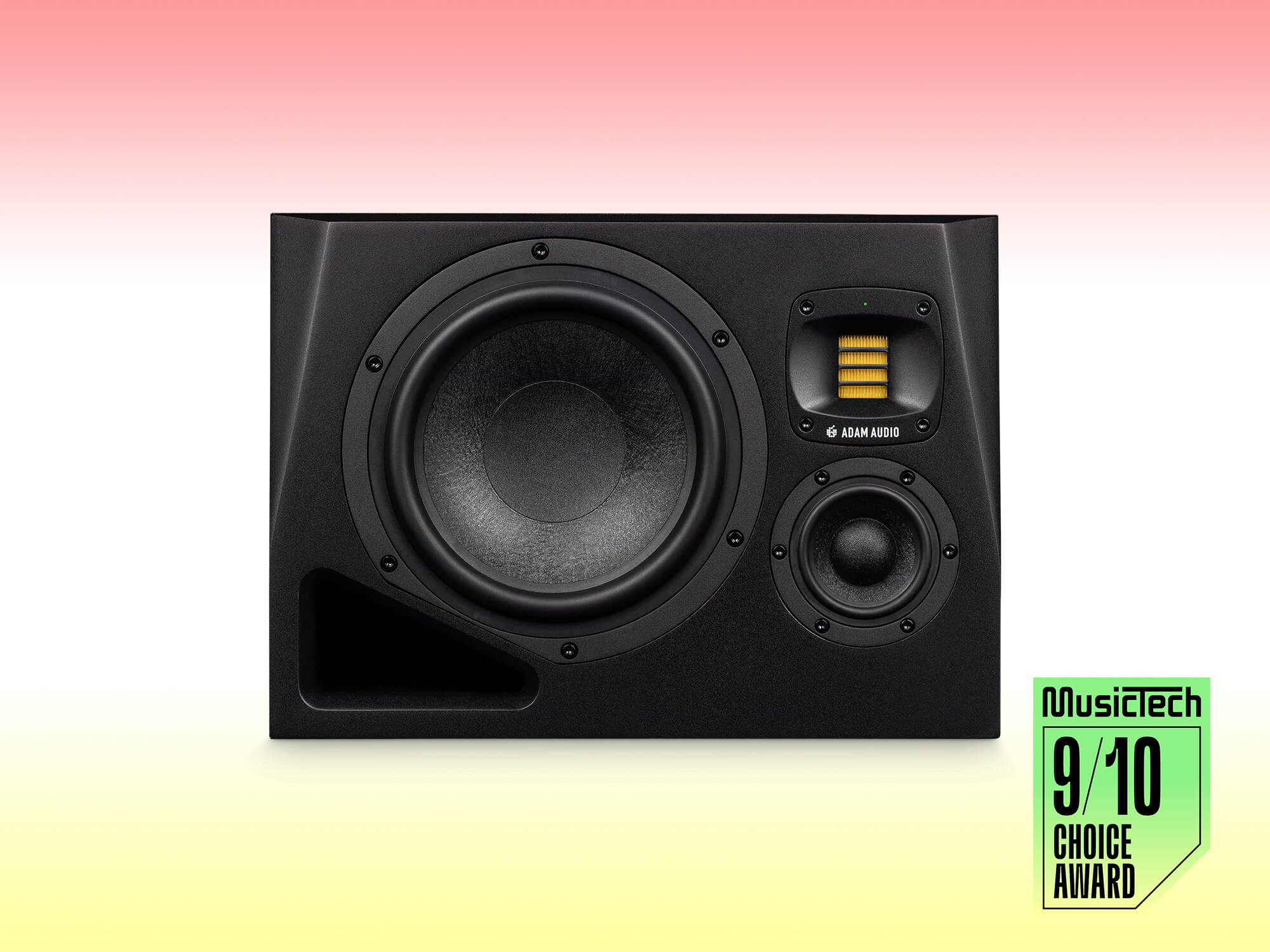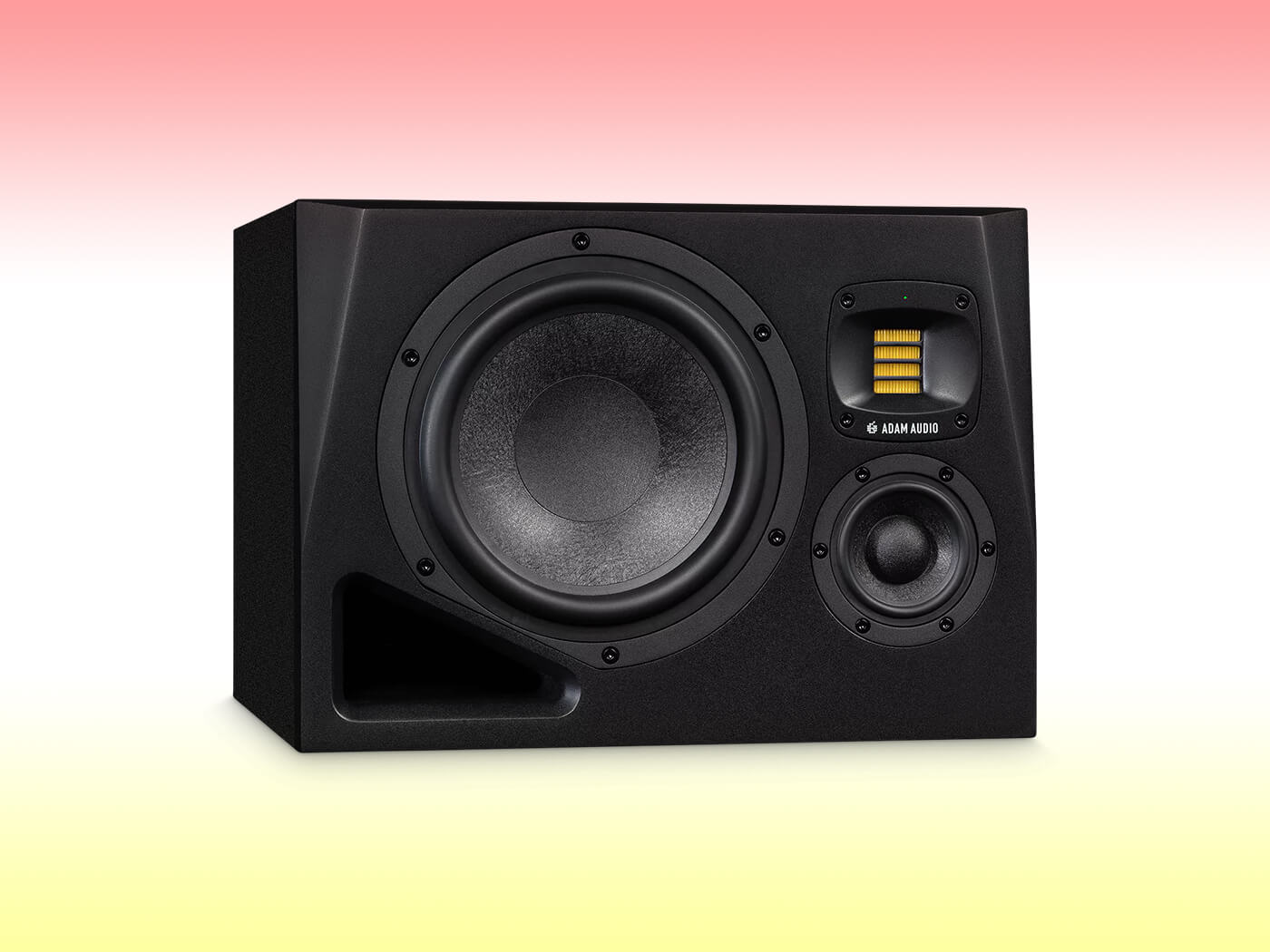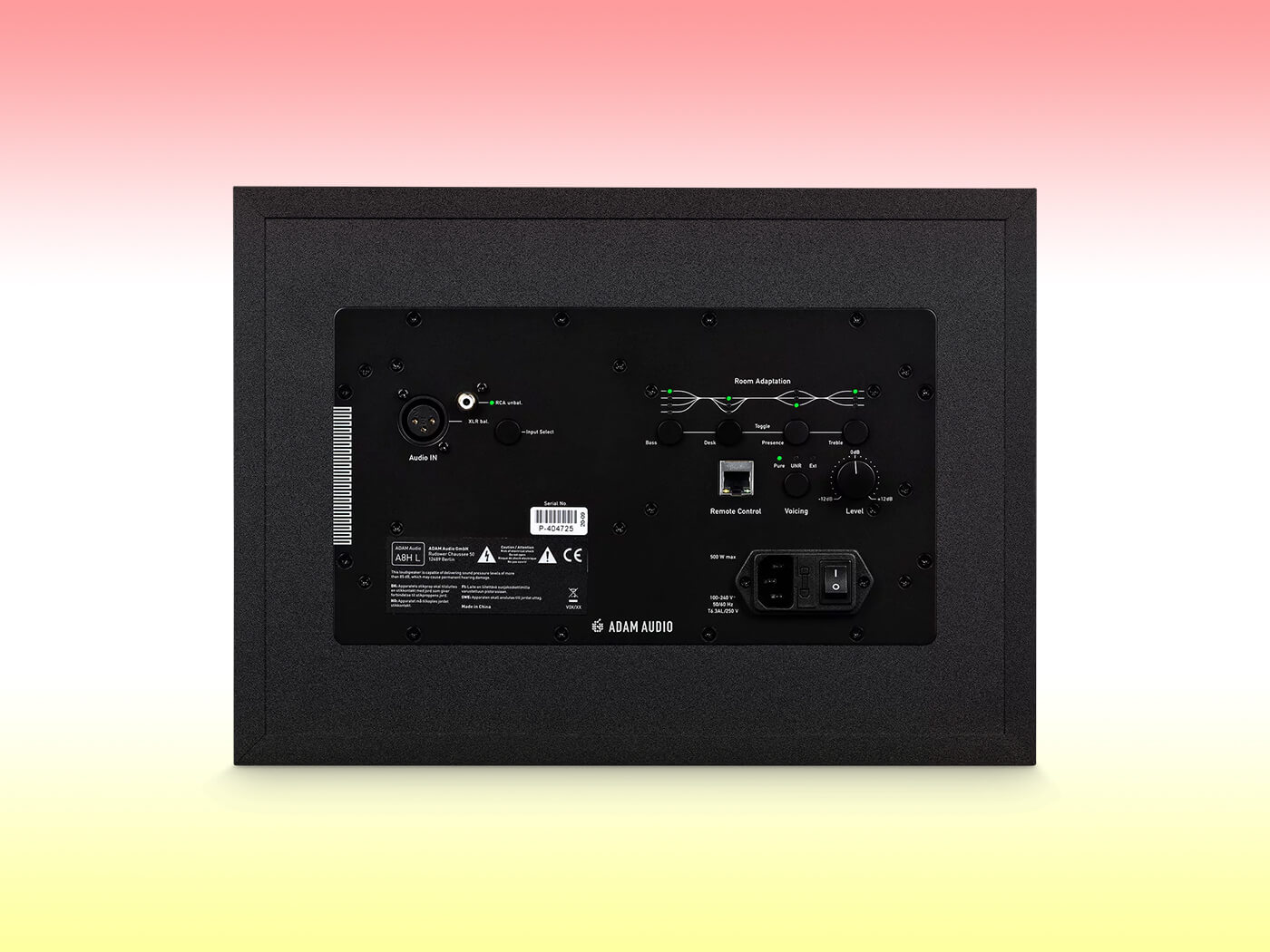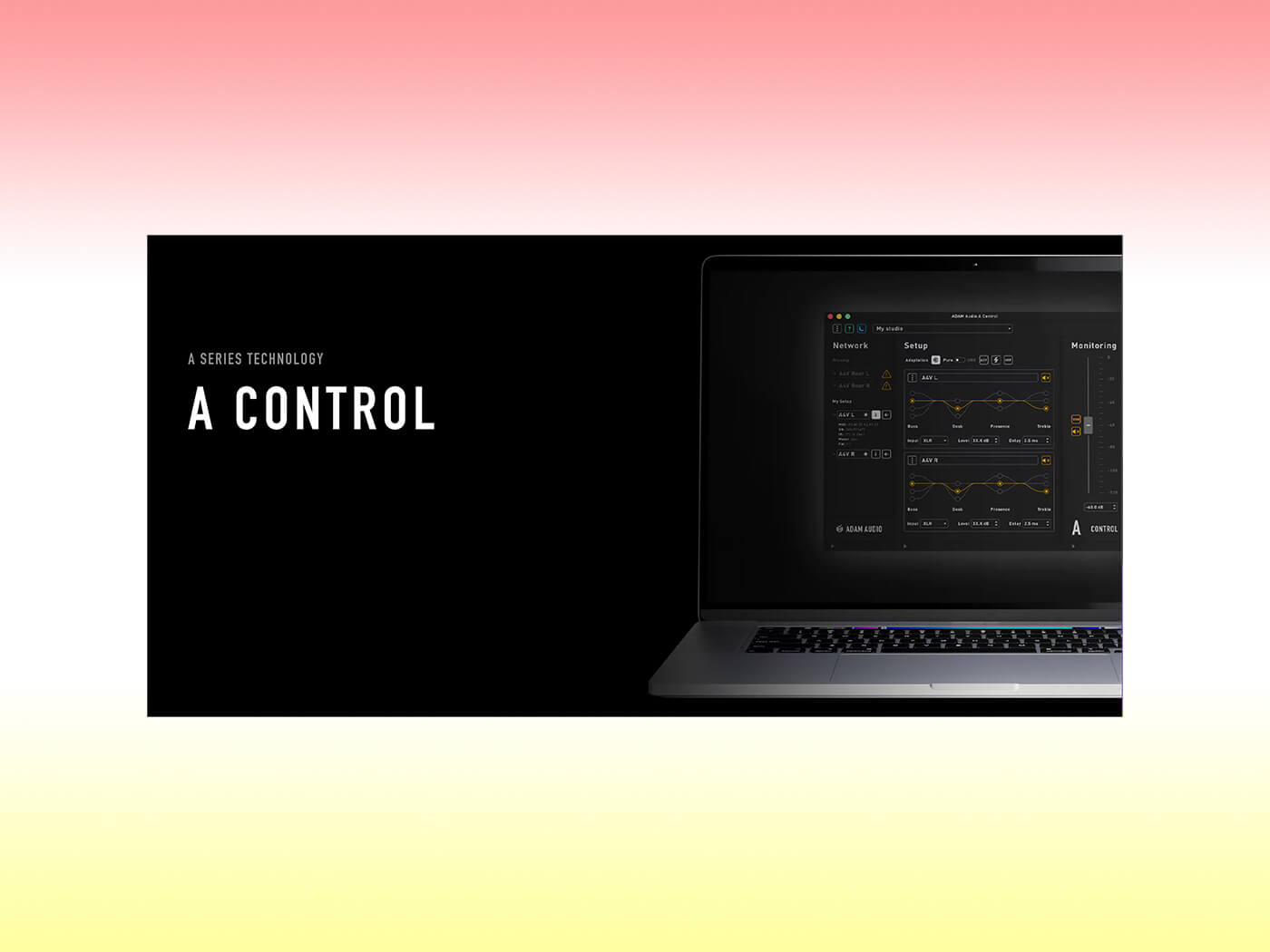ADAM Audio’s A8H offers impressive inherent sound quality and DSP options galore
Can the largest monitor in ADAM’s revamped A Series throw shade on its rivals by means of DSP trickery?

ADAM Audio A8H
Review Overview
Our rating
9
Our verdict
⊕ Multitude of EQ and room correction options
⊕ Self-hosted Sonarworks room calibration, with no latency
⊕ Well priced
⊖ Some self noise
⊖ Users might end up purchasing Sonarworks if they change room or monitor location
£2349 per pair (street price)
ADAM Audio made a huge impact in the home, project and commercial studio world with its original A Series in 2006, the original A7 catching many off-guard with a surprising level of mid-range clarity that many studio monitors lack, plus an affordable price tag. X variants followed with re-designed ports and a wider range of driver sizes, but it wasn’t until late 2022 that the series enjoyed a major overhaul.
- READ MORE: IK Multimedia UNO Synth Pro X: the compact, analogue UNO Synth finds its perfect form at last
Packed with a plethora of helpful DSP gadgetry, the latest A Series features redesigned low- and mid-range drivers featuring low levels of distortion, whilst at the same time retaining the signature sound of ADAM’s proprietary, X-ART ribbon tweeter. Naturally, it was the A7V we put to the test first when the new models were released, and we found the range of sound customisation options and pricing to be ultra impressive. When ADAM suggested we also take a look at the largest-woofer monitor in the same range, we snagged them straight away.
The A8H is a three-way, front-ported, midfield design sporting an 8-inch woofer, a 3½-inch mid driver plus an X-ART tweeter. Just like the A7Vs we already tested, there’s a wide range of options for getting the A8Hs to sound right in the user’s own listening environment, with the first layer of this being simple EQ customisation via push buttons on the rear panel.

Common applications here would be taming low-end if the monitors are close to walls, getting rid of low-mid humps caused by desktop placement, and tweaks to the high frequency range based on your preferred level of crispness. For both the wall-proximity and desk filter cuts, it’s a real advantage that there are two cut positions for each of these switches; many monitors only offer a single cut/notch option – a far blunter tool than the -2 and -4dB options on offer here.
Straight out of the box, we are able to use the rear panel EQ to carefully cut away some boundary bass build-up and the booming low-mid hump caused by our desk that usually results in a muddy mix coming across, all without excess thinning or scooping.
Sonic results are pretty spot-on straight away, with precise bass articulation, detailed yet silky-smooth highs, and compelling stereo imaging. Like other active monitors this size – and especially those with such extended high frequency capabilities – self noise is a slight issue. There’s more hiss evident up close than with our Genelecs, but it isn’t really going to trouble you at midfield distance, and is certainly less noticeable than with the Type 07 MK2s from related brand HEDD Audio that we reviewed in 2021.

Work remotely
For more detailed tweaking, the A Control desktop app interfaces with the speaker via a network-connected RJ45 port on the rear of each monitor. Within the app, a more complex, 6-band EQ is accessible, plus convenient extras like speaker muting and preset saving.
We’ve saved the best trick till last, however; the ability for the monitors to self-host SonarWorks’ SoundID Reference (room equalisation) calibration files. We’re big fans of SonarWorks’ ability to drag the most accurate and articulate sound of any half-decent monitor speaker or pair of headphones, but running on a host computer, you have to deal with latency, checking that you’re correctly routed to the Sonarworks audio driver, plus occasional interruptions when the software drops the licence or current preset.

With the ADAM A Series, you get a 60-day trial of SoundID Reference, during which time you can place and measure the monitors’ response from your listening sweet spot using a test microphone. Once the measurement process is complete the resultant calibration file – a complex, custom EQ profile – can be loaded directly into the monitor in A Control, without the penalty of additional latency. Really neat stuff, but it must be noted that you’ll have to buy Sonarworks if your trial runs out and you decide to move your speakers to a new room or position. It’s a big shame that there isn’t a more generous arrangement whereby ADAM owners could get, say, five free measurements/trials, or similar. Consequently, this extra cost may well need to be factored in when making a buying choice.
With the Sonarworks calibration enabled, the sound is simply stunning; we really enjoy putting the monitors through their paces with a more even, mid-forward voicing than before, as well as increased envelopment and clearer stereo separation of sources. It’s a testament to the voicing of the ADAMs that the EQ correction is rarely more than 3dB either way of the midpoint – far less than with our usual, Finnish-made monitors, and resulting in less of a compensatory level drop to leave headroom for the boosts.
Listen in
- Pete Tong’s rework of the 90s anthem Seven Seconds reveals a tight kick, and high-mid bite on snare, although not too harsh. Dual lead vocals sit on top perfectly, not appearing to fight for space with the surrounding string section.
- Hedonism from Skunk Anansie demonstrates transient kick, snare and tom detail that jumps out in a wholly satisfying way, whilst melodic bass lines sing through the texture. The layered, double-tracked distorted guitars happily co-exist in the stereo field, with the wah-heavy solo being pinpointed on the right-hand side.
- Steely Dan’s I Got the News showcases multiple guitar and percussion and horns layers all in precise detail. This album can be a little too crisp on the ears and the ADAMs push the boundary of brightness here, but the keen transient response makes up for this. In response, we tweak our SoundID reference calibration to back-off the corrective boosts at the high extremes, so that part of the spectrum actually ends up being closer to the factory-set contour!
Weigh up the options
The A8H’s features stack up extremely favourably against competing three-way models. Both the HEDD Audio Type 20 MK2 and Neumann’s KH 310s are around £1000 more a pair and have fewer DSP capabilities (the HEDDs have smaller, 7-inch woofers to boot). Meanwhile, Dynaudio’s LYD 48s are less expensive per pair, but only have very simple filter dip switches with no fine tuning of level. Put simply, ADAM Audio has knocked it out of the park with the A8H.
Key features
- 3-way, front-ported studio monitors
- 8-inch woofer, 3½-inch mid driver and 1-inch X-ART tweeter
- Switchable balanced (XLR) and unbalanced (RCA) inputs
- Push-button EQ controls, including 2-position desktop filter
- Level/gain fine control
- Network control with detailed EQ options via the A Control app
- Onboard Sonarworks integration (60-day trial provided for set-up)
- Dimensions: 274 mm (height) x 382 mm (width) x 329 mm (depth)
- Weight: 13.6 kg per monitor
- Contact: adam-audio.com